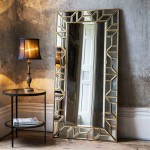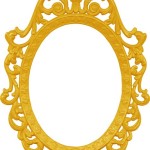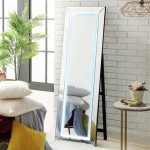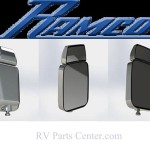Which Mirror Is Used In Headlights Of Car And Why?
Car headlights, essential for safe driving at night, are complex systems that harness the power of light reflection to illuminate the road ahead. While different headlight technologies have emerged over the years, the basic principle of light reflection remains constant. The heart of this process lies in a specifically designed mirror: the parabolic reflector. This article will delve into the use of parabolic reflectors in car headlights and why they are the preferred choice.
The Parabolic Reflector: A Central Component
Parabolic reflectors are curved mirrors shaped like a parabola, which is a symmetrical U-shaped curve. This unique shape plays a crucial role in how headlights direct and focus light. When a light source is placed at the focus point of the parabola, the light rays emitted from it bounce off the parabolic surface and travel parallel to the axis of the parabola. This property is known as the reflective property of parabolas.
In car headlights, the bulb serves as the light source, positioned at the focal point of the parabolic reflector. The light emitted from the bulb strikes the parabolic surface and is reflected outward in a parallel beam. This parallel beam greatly enhances the distance and intensity of the light reaching the road ahead, providing improved visibility for the driver.
Why Parabolic Reflectors Are Preferred
Parabolic reflectors are the preferred choice for car headlights due to their numerous advantages over other types of mirrors:
1. Long-Range Illumination:
The parallel beam produced by a parabolic reflector allows for long-distance illumination, critical for safely navigating winding roads and anticipating hazards ahead. This is especially important on highways or in rural areas where visibility is limited.
2. Uniform Light Distribution:
Unlike flat mirrors that simply reflect light in a single direction, parabolic reflectors distribute the light evenly across the road surface. This ensures that the entire road ahead is illuminated, reducing the chance of blind spots or areas of low visibility.
3. Enhanced Brightness:
By focusing the light rays into a parallel beam, parabolic reflectors effectively increase the brightness of the headlights without needing a more powerful light source. This allows drivers to see clearly even in challenging conditions such as fog, rain, or snow.
4. Reduced Glare:
The parallel beam nature of parabolic reflectors helps minimize glare for oncoming drivers. The light is directed towards the road surface rather than directly into the eyes of other drivers, promoting safer driving conditions.
Other Types of Reflectors: A Comparison
While parabolic reflectors dominate the automotive lighting landscape, other reflector designs exist, but they lack the specific advantages of parabolic reflectors.
1. Spherical Reflectors:
Spherical reflectors, shaped like a sphere, are less efficient than parabolic reflectors in focusing light. They produce a divergent beam, spreading light in various directions, leading to diminished distance and intensity of illumination. This makes them less suitable for car headlights.
2. Elliptical Reflectors:
Elliptical reflectors, shaped like an ellipse, focus light towards two points. While they can be used in some lighting applications, their light distribution is less uniform than parabolic reflectors, making them suboptimal for car headlights.
The above comparison highlights the superiority of parabolic reflectors in focusing and distributing light efficiently, making them the ideal choice for car headlights.
Conclusion
The parabolic reflector's ability to focus and direct light into a parallel beam is essential for safe and efficient car lighting. Its design maximizes distance and intensity of illumination, ensuring a clear view of the road ahead while minimizing glare for oncoming drivers. While other reflector types exist, they lack the key advantages of a parabolic reflector, making it the dominant choice in modern car headlights.

Ncert Q8 Name The Type Of Mirror Used In A Headlights Car B

Which Mirror Is Used In The Headlights Of A Car

Which Type Of Mirror Is Used In Headlights Vehicles

Ncert Q8 Name The Type Of Mirror Used In A Headlights Car B

Which Type Of Mirror Used In Cars Concave Plane Convex Teachoo

Why Concave Mirror Used In Headlights Brainly

State The Type Of Mirrors Used For I Headlights And Ii Rearview In Cars Motorcycles Give Reason To Justify Your Answer Each Case

8 Name The Type Of Mirror Used In Following Situations A Headlights Car B Side Rear

Simple Uses Of Concave Mirrors

Why Headlights Used Concave Mirror








